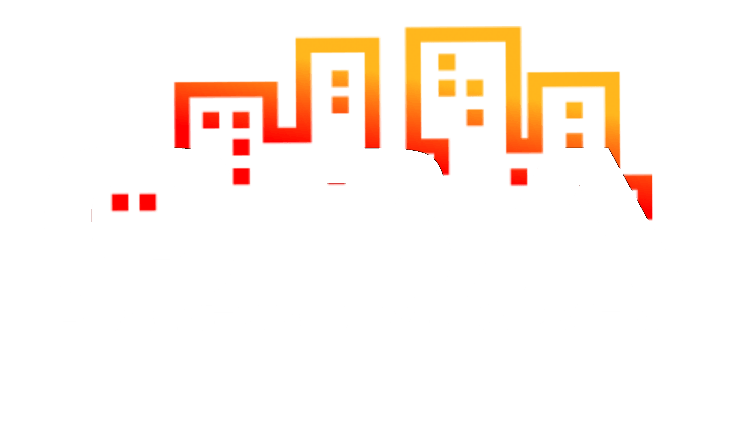Photo by Roger Harris
I was working with a client to help them prepare for a series of introductory meetings they have scheduled with several new business prospects next month. This is a digital agency with a very defined niche and value proposition for businesses in that niche. They’ve had great success in the UK and Canada and now they’re hoping to expand their business in the United States.
So, they’re fortunate in many ways, but they still face obstacles. While they solve a significant problem for their clients, it’s also a large and complex one and because of that, these businesses have been known to delay solving it until it’s absolutely necessary. What’s more, these businesses are often large, slow-moving organizations.
All this to say that, while this digital agency has a strong value proposition, they also have some major hurdles to overcome in their sales process.
The task we were working on together: develop a credentials presentation to use in these upcoming meetings.
I’ve written in the past about how I’m not a big fan of the creds deck. At least not in the ten-to-fifteen-slide recitation of agency facts that we’re most familiar with. Here’s why:
The standard creds you’re familiar with boxes you into a presentation that’s all about you. You know the drill…
“Here are our office locations…”
“This is our team…”
“These are the awards we’ve won…”
“This is our proprietary process… “ (which you may or may not actually follow when doing work for clients?)
The irony, of course, is that this meeting is meant to be a way for your prospective client to get to know your agency. Isn’t the creds deck a means to achieve that?
You would think so, but what your prospective client really wants to know is who you are in the context of their issues. And the standard creds deck doesn’t do a great job of that.
I think standard creds are good for two things:
1. Early verification. Before this introductory meeting, the client has probably done some due diligence to make sure you’re legitimate, most likely by going to your agency’s website. And your website is a great place for this kind of credentialing information! Much better than a deck. I wish agencies relied more on their websites as a place for this information rather than endlessly rearranging the order or tweaking the formatting of slides.
2. Post-rationalization. There’s a moment during the new business process when the client turns a corner and makes an emotional decision that yours is the agency they want to hire. It’s hard to describe it but anyone who’s been through it knows the moment. The questions asked by the client are different and they start to send signals, intentional or not, that the conversation is going to continue beyond the pitch. It’s a great feeling!
But sometimes, there are still loose ends to wrap up. Like when the key decision-maker is all-in, but she’s got to get it endorsed by the CEO or the chairman of the board or even department or division heads. Her reputation is on the line and she must show that this agency has the goods – the highly qualified team, the social proof of Cannes or Effie awards, the proven process that ensures lightning can strike more than once in the same place.
The creds deck is not a good performer in the meaty middle of a sales cycle when you need to be persuasive and insightful and thoughtfully react to the client’s cues.
So, what’s a better method?
Before I give you my answer to that question, let’s just re-establish the circumstances. This is about preparing for an introductory meeting with a qualified prospective client. An agency’s objectives for this meeting are to:
Validate that the client is a good fit for the agency and the agency is a good fit for the client.
Advance the sale by concluding with clear next steps toward the goal of working together.
I’m making an assumption that the person or group making up “the client” already has a baseline knowledge of your agency. It’s more than reasonable to expect that someone has checked out your website or has had an initial conversation with you. In other words, your reputation precedes you at least somewhat.
I’m also assuming that this client aligns with the agency’s ideal client profile in some manner and isn’t a “shoot for the moon” situation in which the agency simply got lucky when the prospective client said “yes” to a meeting.
A Simple and Foolproof Framework for a Great Credentials Meeting
Back to my digital agency client. In our session together, I ended up guiding him toward a simple (almost embarrassingly so) 4-part framework. He found it very useful and it got me thinking that others might find it useful too.
So, instead of pulling out those standard creds slides and entering into an uphill battle to turn them into something unique and compelling, do this instead.
Part 1 – Establish Context
OK, we’ve assumed that this prospect aligns with your ideal client avatar in some way so it’s likely that you’re in a position to make intelligent observations about the challenges this company faces. And, while some of these observations may come as a result of conclusions drawn from desk research, the strongest observations and insights will come from lived experience. In other words, the successful outcomes you helped bring about for businesses that are relevant to this prospect in some way.
It might require you to build credibility bridges–taking what you know deeply about a client or category and applying that knowledge to a different client or category, such as taking what you know about purchasing habits of millennials around travel and applying it to automotive–and that’s OK!
Part 2 – Introduce Contrast
You’ve shared your observations and insights and ideally have allowed space for the client to validate them or to redirect you. This is really important because you’re making the client an active participant. If all goes well, this is the beginning of a journey together so you should treat it that way.
At this point, you and the client have both agreed that the client faces obstacles but,”victory comes from finding opportunities in problems” (Sun Tzu). This is the moment for you to offer hope for a better future state. What opportunities do you see that your services can help to fulfill?
By the way, I don’t think it matters whether you start by establishing challenges or presenting opportunities. The magic is the contrast between the two. It sets up a narrative arc and your audience is hooked because now they want to know the ending. They can’t help themselves. They’re human beings and we are hardwired to engage with a story.
Part 3 – Demonstrate Qualifications
Now that your audience is a willing participant, shift to offering case studies to demonstrate you’ve done this (or something like this) before.
When written and presented well, case studies are little miracles. If I had to rely on only one tool to get my agency more business, I’d choose the case study.
For one, case studies are stories and therefore irresistible to us.
Plus they offer you a showcase for your credentials–your talented team, your methodology, the alchemy behind how you generate ideas and make them real. Case studies allow the client to draw their own subjective conclusions. It’s so much better when they conclude on their own that your solutions were brave and innovative rather than you clobbering them over the head with empty statements (Trust us, we’re relentlessly fearless! We’re innovative!”).
Have three case studies or client examples ready because we humans also like things in sets of threes (one or two is too few to get a full picture; four or more and everything starts to blur together). But also have a couple of back-ups in case your client leads you to a different destination during your conversation in parts 1 and 2.
Part 4 – Advance the Sale
It makes me sad after an agency has an introductory meeting with a prospect and, when I ask them what the next steps are, they say something like, “they’re going to talk internally and get back to us.” ????
You will have a healthier pipeline when you learn how to advance the sale. Advancing the sale is an idea that I first learned about in SPIN Selling, still one of the best books on selling, despite the fact that it was published more than 35 years ago. I consider it required reading for anyone doing complex, high-value sales. That means you, seller of agency services!
Here’s how Huthwaite, the sales training company that the author of SPIN Selling, Neil Rackham, founded, defines it:
“In a major sale, clients are seldom likely to order something or decide ‘no sale’ immediately; next steps are likely to be what SPIN Selling refers to as Advances or Continuations. An Advance is when a customer commits to take action that moves the sale forward by providing access to a new, meaningful resource. A Continuation, on the other hand, is when the customer doesn’t commit to doing anything, but the seller may have to do a lot. We consider Advances to be successful, but Continuations not to be. Successful sellers look for the highest realistic commitment they can get from each interaction to continue in the sales cycle.”
Don’t settle for a conclusion in which the client says to you, “we’ll get back to you.” End your meeting with a frank conversation about whether the client sees value in what you do. And if they do, what are the steps you both need to take to get closer to working together? You want specifics here. Who else internally does the client need to convince? And how can you support them? When are budgets for bringing new resources like yours on board? And can you get a meeting on calendars now to regroup and prepare for that?
And if they’re not willing to engage with you in a discussion like this, then it’s likely you’re not the right resource for them.
As the old saying in sales goes, the next best answer to “yes” is “no”.

